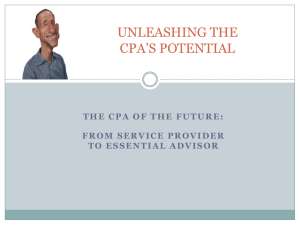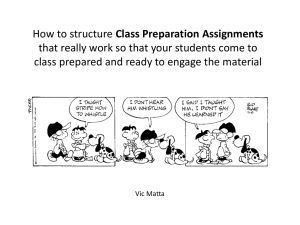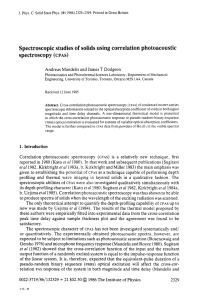Course Preparation Assignments
advertisement
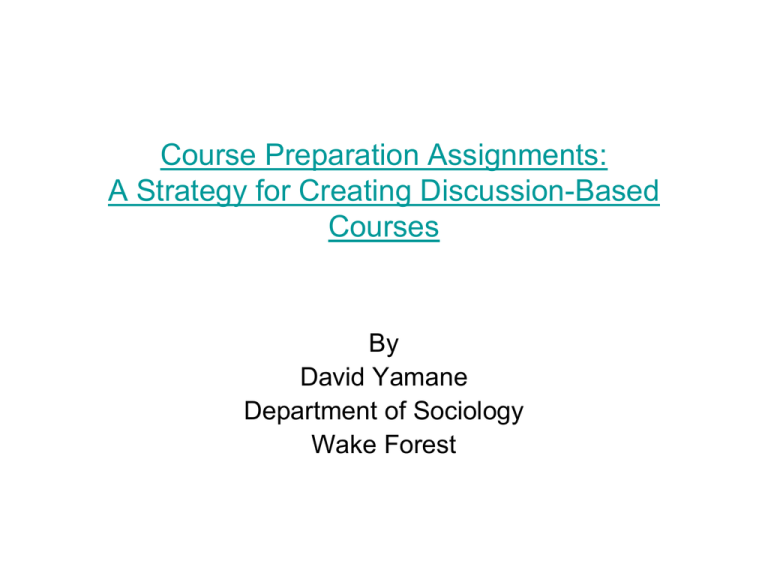
Course Preparation Assignments: A Strategy for Creating Discussion-Based Courses By David Yamane Department of Sociology Wake Forest The Challenge • Lecturing is an inefficient and outmoded pedagogy. • Paper originally titled: “Anti-Lecture” • But how do we get beyond lecturing? First Rationale: Student Involvement is the Key to Learning • "The theory... Students learn by becoming involved... seems to explain most of the empirical knowledge gained over the years about environmental influences on student development. ... What I mean by involvement is neither mysterious nor esoteric. Quite simply, student involvement refers to the amount of physical and psychological energy that the student devotes to the academic experience." (Astin, 1985, pp. 133-51) • "Analysis of the research literature. . .suggests that students must do more than just listen: They must read, write, discuss, or be engaged in solving problems." (Bonwell & Eison, Executive Summary, n.p.) • "The body of research on the impacts of the college academic experience is extensive. The strongest general conclusion [is that] the greater the student's involvement or engagement in academic work or in the academic experience of college, the greater his or her level of knowledge acquisition and general cognitive development." (Pasquerilla & Terenzini, 1991, p. 616) Second Rationale: Discussion Can Foster Democratic Values • Stephen Brookfield and Stephen Preskill: “Discussion and democracy are inseparable because both have the same root purpose–to nurture and promote human growth. . . . Democracy and discussion imply a process of giving and taking, speaking and listening, describing and witnessing–all of which help expand horizons and foster mutual understanding. Discussion is one of the best ways to nurture growth because it is premised on the idea that only through collaboration and cooperation with others can we be exposed to new points of view. . . . In the process, our democratic instincts are confirmed.” (Discussion as a Way of Teaching: Tools and Techniques for Democratic Classrooms. Jossey-Bass, 1999.) • Adam Gamoran and Martin Nystrand focus on the centrality of negotiation and reciprocity to discussion. (“Background and Instructional Effects on Achievement in Eighth-Grade English and Social Studies.” Journal of Research in Adolescence 1/3 [1991]:277-300.) • Jim Cummins suggests that reciprocal-interaction instruction is particularly empowering of minority students. (“Empowering Minority Students: A Framework for Intervention.” Harvard Educational Review 56/1 [1986]:18-36.) The Problem: Preparation for Discussion • To realize the educational and democratic potential of discussion, it must be done well. • My students routinely complain about having to “do discussion” in their classes. They don’t see the point. • Prior research suggests that unstructured discussion may be worse than lecturing in terms of substantive engagement and cognitive development. (Gamoran and Nystrand 1991) The Solution: First Exposure Prior to Class • Students must come to class every day prepared to actively engage the course materials • To do so, they must have read and thought about the course material before class • I ensure this “first exposure” by assigning Course Preparation Assignments (CPAs) Course Preparation Assignments Basic Structure 1. Background and/or Introduction 2. Purpose 3. Reading/Writing Assignment Example: CPA 2 on Divorce Example: CPA 4 on Theory Practical Considerations: Distribution • Previously: Hand them out in class • Currently: Make them available on my course websites – Principles of Sociology Sociology of Religion • Could also use Blackboard Practical Considerations: Grading Approach 1: Credit/No Credit • I collect assignments at the beginning of class. Students must submit CPAs that reflect a “serious effort” to complete the assignment. If they do, they receive credit. • Small class – look at each. Large class – spot check. May have a graduate student or an undergraduate assistant do this. • Each CPA counts for 1 point, and if they complete 17 CPAs, they get 20 points (20% of their final grade). • Class participation is another 20% of their grade Practical Considerations: Grading Approach 2: CPA Portfolios • • • I stamp and return CPAs to students. At the end of the semester, students compile all of their stamped CPAs into a portfolio that they submit for grading. Portfolio grade is based on both the quantity and quality of the CPAs it contains. Quantity: Students receive three (3) points for each stamped CPA up to 10 CPAs for a total of 30 points. Quality: The number of points for quantity is then multiplied by a percentage depending on the overall quality of the CPAs in the portfolio, as follows: 100% = Exceptionally High Achievement 90% = Superior 80% = Good 70% = Satisfactory 60% = Passing But Unsatisfactory 60% or less = Failure • • For example, 10 CPAs I judge collectively to be “good” yields 24 points out of 30 possible. As in the other approach, class participation is another 20% of the final grade. Challenges • Good CPAs connect students to specific course materials (readings, concepts) and ask authentic questions. Example • Because they are based on authentic questions, I must be flexible and tolerate some uncertainty in the direction the discussions will take. • Creating good CPAs is hard. I am constantly discarding bad ones and revising decent ones to make them better. Trial and error is inevitable. Other Resources • Gregor Novak, Andrew Gavrin, Wolfgang Christian, and Evelyn Patterson, Just-InTime Teaching (Saddle River, NJ: Prentice-Hall, 1999). • JiTT website: http://134.68.135.1/jitt/what.html Questions?
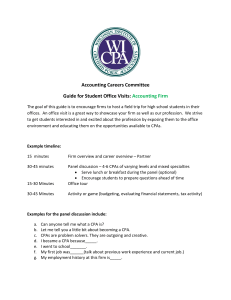
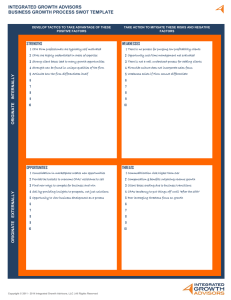
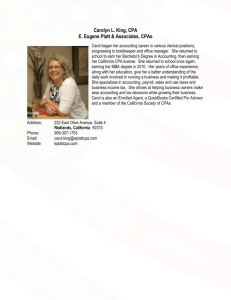
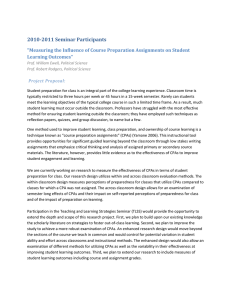
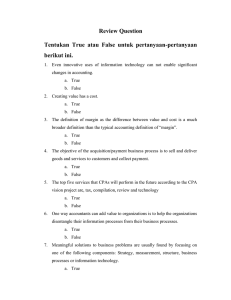
![-----Original Message----- From: J. David Powers [ ]](http://s2.studylib.net/store/data/015588262_1-b470685aed94969e2d32ace1f35a6ac2-300x300.png)

